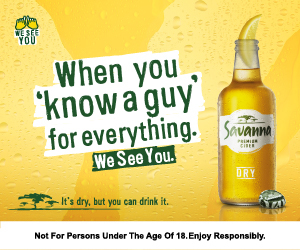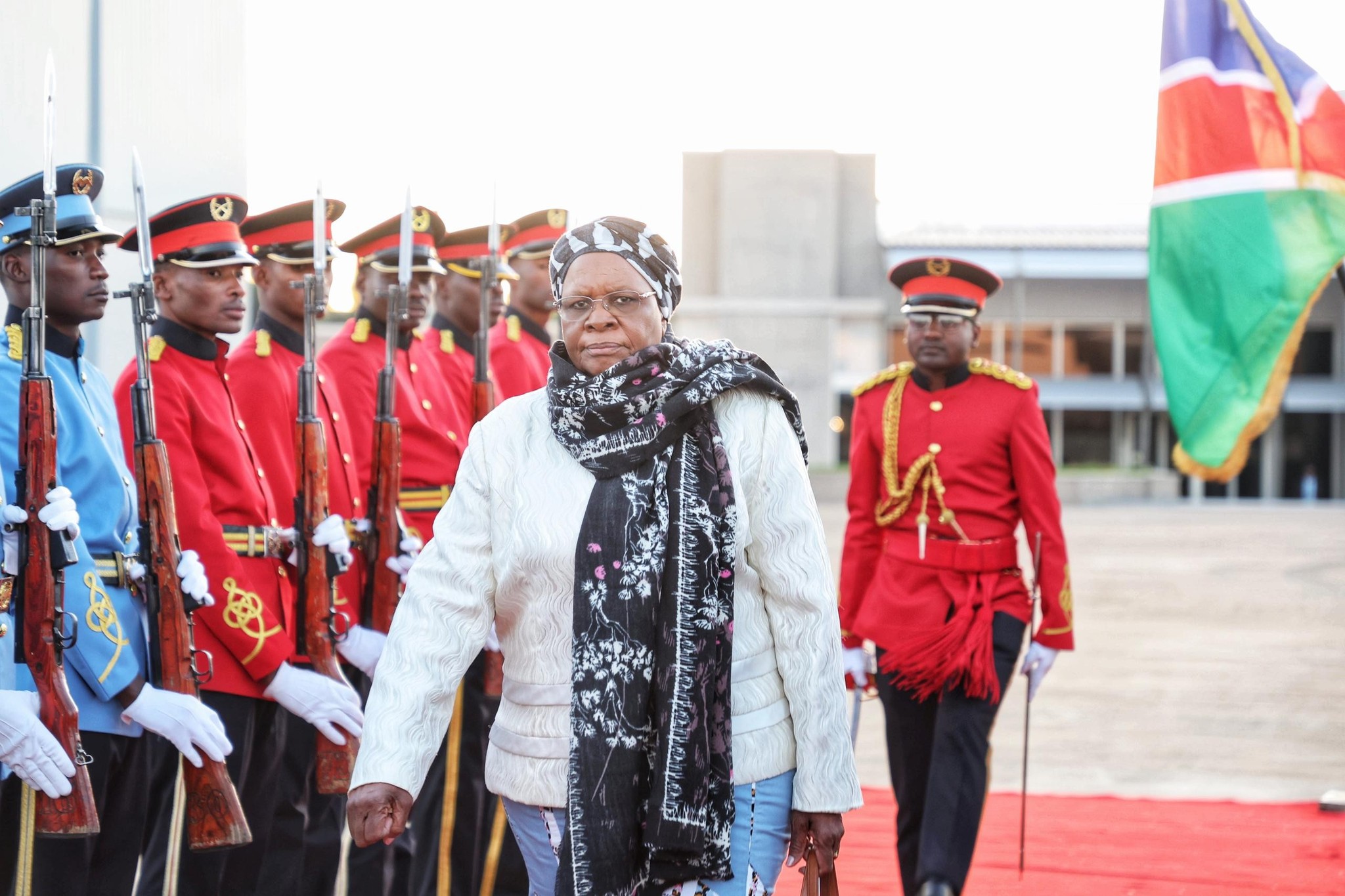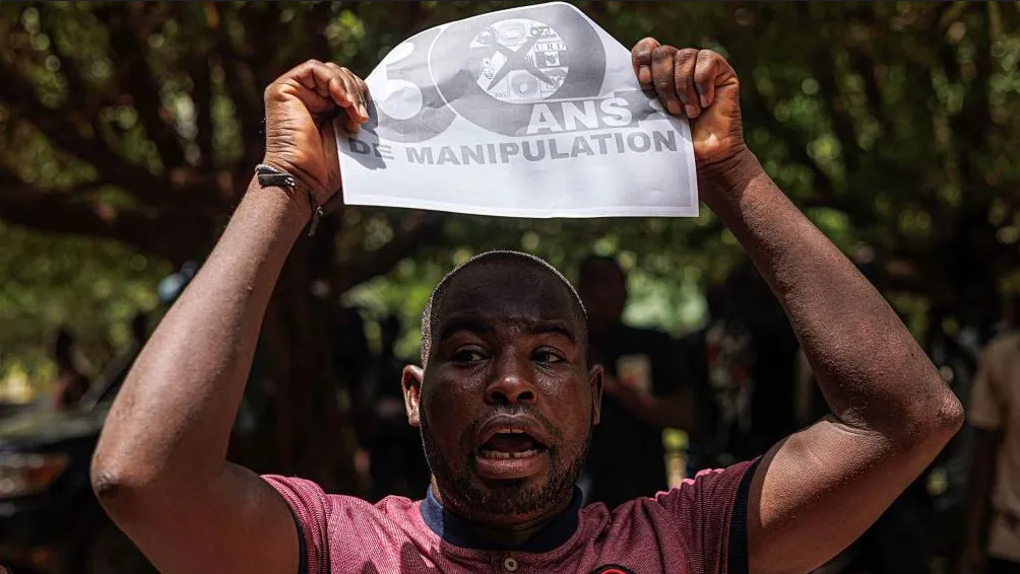IT took a chance meeting over a flat tyre in the middle of the Skeleton Coast Park to spark an idea that has given Namibia one of its most successful and sustainable environmental projects which turns 25 this year – the Save the Rhino Trust.
Later this month to mark the anniversary and in memory of the project founder, Blythe Loutit, a 360-km 12-day sponsored fundraising walk is being planned through the 25 000 square kilometre range of the desert-adapted black rhino (Diceros bicornis bicornis). Now a tourist attraction, where guests to the southern Kunene Region (Damaraland is in the south and Kaokoland in the north) can view the shy splendid animals under the watchful eye of their protective game guards, things were very, very different 20 years ago.That was when a conversation between nature conservator’s wife, Blythe, who died in 2005, and Ina Britz, whose geologist husband, Colin, was doing work in the area, took place.Ina was on the way from loading water at a waterhole for the geologist crew when she met Blythe stranded with a puncture and a broken jack.Ina was infuriated at finding three dead bullet-riddled rhino, with their horns hacked off, at the waterhole she had just left.At the time Blythe’s husband Rudi was a conservator in the Skeleton Coast Park based at the Ugab River Mouth in the south of the park.It was the early eighties and Damaraland was a “restricted area” where military and administrative officials from South Africa, in control of then South West Africa, had a free hand.Hunting was rife: from helicopters, vehicles, at the scarce waterholes and with automatic weapons.At one waterhole Blythe found six elephant carcasses mutilated to remove their tusks.At another there were three more.In addition to the hunters from over the border, they also paid local subsistence farmers to poach the animals for their horns which fetch high prices in the East, where they are believed to have medicinal properties.Not sure what they were going to do, the women knew they must do something, and soon, to stop the carnage and protect the animals.With assistance from their husbands, conservation-conscious businessmen in Windhoek and community leaders in Damaraland, they set up the Namibia Wildlife Trust, which eventually led to the formation of Save the Rhino Trust (SRT) as it is known today.A feature of the trust has been its close collaboration with Government and the local communities in the area.This community involvement with rhino conservation includes a number of income-generating projects like craft centres, providing locally made crafts for visitors to buy as well as info on the rhinos.After its inception, a small group of people started patrolling and monitoring the area, specifically keeping an eye on the elephant and rhino populations.Garth Owen-Smith joined the Namibia Wildlife Trust in the mid-eighties to develop a community game guard system, which formed the basis of communal conservancy as it is now known.Over the years the SRT developed a system of monitoring and established a database for each individual rhino until today where the black rhino population in the communal north-western regions of Namibia is the best documented in the world.These are also the only rhino in the world that have survived and thrived on communal land with no formal conservation status.Gradually teams of trackers have been established to patrol the different rhino areas, each with its own vehicle and monitoring equipment: a camera with telephoto lens, global positioning system (GPS), notebooks and identification forms.Field notes are collected regularly and the information entered into the database.All natural deaths are recorded and the horns taken to the Ministry of Environment and Tourism in Windhoek for safekeeping.When a rhino has not been spotted for some time, a concerted effort is made to find it.Camels have been introduced in recent years to help the patrols reach the most inaccessible areas.Now tourists too get a chance to see the famed black rhino with SRT trackers stationed at the tented Desert Rhino Camp, owned and run by Wilderness Safaris.The rhino camp idea was the brainchild of Blythe, the late Mike Hearn, former research director, and current research head Simson Uri-khob and the then owner of the Palmwag Concession, in which this range falls, Jockel Gruettemeyer.The fundraising walk is to take place from August 29 until September 9 and will visit many of Blythe’s favourite springs.It will dissect the 25 000-square-kilometre area from the SRT Ugab base camp to the Hoaruseb.For more information and enquiries, email: srtall@rhino-trust.org.na or telephone or fax (064) 40 3829.* Background information kindly provided by Sharon MontgomeryNow a tourist attraction, where guests to the southern Kunene Region (Damaraland is in the south and Kaokoland in the north) can view the shy splendid animals under the watchful eye of their protective game guards, things were very, very different 20 years ago.That was when a conversation between nature conservator’s wife, Blythe, who died in 2005, and Ina Britz, whose geologist husband, Colin, was doing work in the area, took place.Ina was on the way from loading water at a waterhole for the geologist crew when she met Blythe stranded with a puncture and a broken jack.Ina was infuriated at finding three dead bullet-riddled rhino, with their horns hacked off, at the waterhole she had just left.At the time Blythe’s husband Rudi was a conservator in the Skeleton Coast Park based at the Ugab River Mouth in the south of the park.It was the early eighties and Damaraland was a “restricted area” where military and administrative officials from South Africa, in control of then South West Africa, had a free hand.Hunting was rife: from helicopters, vehicles, at the scarce waterholes and with automatic weapons.At one waterhole Blythe found six elephant carcasses mutilated to remove their tusks.At another there were three more.In addition to the hunters from over the border, they also paid local subsistence farmers to poach the animals for their horns which fetch high prices in the East, where they are believed to have medicinal properties.Not sure what they were going to do, the women knew they must do something, and soon, to stop the carnage and protect the animals.With assistance from their husbands, conservation-conscious businessmen in Windhoek and community leaders in Damaraland, they set up the Namibia Wildlife Trust, which eventually led to the formation of Save the Rhino Trust (SRT) as it is known today.A feature of the trust has been its close collaboration with Government and the local communities in the area.This community involvement with rhino conservation includes a number of income-generating projects like craft centres, providing locally made crafts for visitors to buy as well as info on the rhinos.After its inception, a small group of people started patrolling and monitoring the area, specifically keeping an eye on the elephant and rhino populations.Garth Owen-Smith joined the Namibia Wildlife Trust in the mid-eighties to develop a community game guard system, which formed the basis of communal conservancy as it is now known.Over the years the SRT developed a system of monitoring and established a database for each individual rhino until today where the black rhino population in the communal north-western regions of Namibia is the best documented in the world.These are also the only rhino in the world that have survived and thrived on communal land with no formal conservation status.Gradually teams of trackers have been established to patrol the different rhino areas, each with its own vehicle and monitoring equipment: a camera with telephoto lens, global positioning system (GPS), notebooks and identification forms.Field notes are collected regularly and the information entered into the database.All natural deaths are recorded and the horns taken to the Ministry of Environment and Tourism in Windhoek for safekeeping.When a rhino has not been spotted for some time, a concerted effort is made to find it.Camels have been introduced in recent years to help the patrols reach the most inaccessible areas.Now tourists too get a chance to see the famed black rhino with SRT trackers stationed at the tented Desert Rhino Camp, owned and run by Wilderness Safaris.The rhino camp idea was the brainchild of Blythe, the late Mike Hearn, former research director, and current research head Simson Uri-khob and the then owner of the Palmwag Concession, in which this range falls, Jockel Gruettemeyer.The fundraising walk is to take place from August 29 until September 9 and will visit many of Blythe’s favourite springs.It will dissect the 25 000-square-kilometre area from the SRT Ugab base camp to the Hoaruseb.For more information and enquiries, email: srtall@rhino-trust.org.na or telephone or fax (064) 40 3829.* Background information kindly provided by Sharon Montgomery
Stay informed with The Namibian – your source for credible journalism. Get in-depth reporting and opinions for
only N$85 a month. Invest in journalism, invest in democracy –
Subscribe Now!










